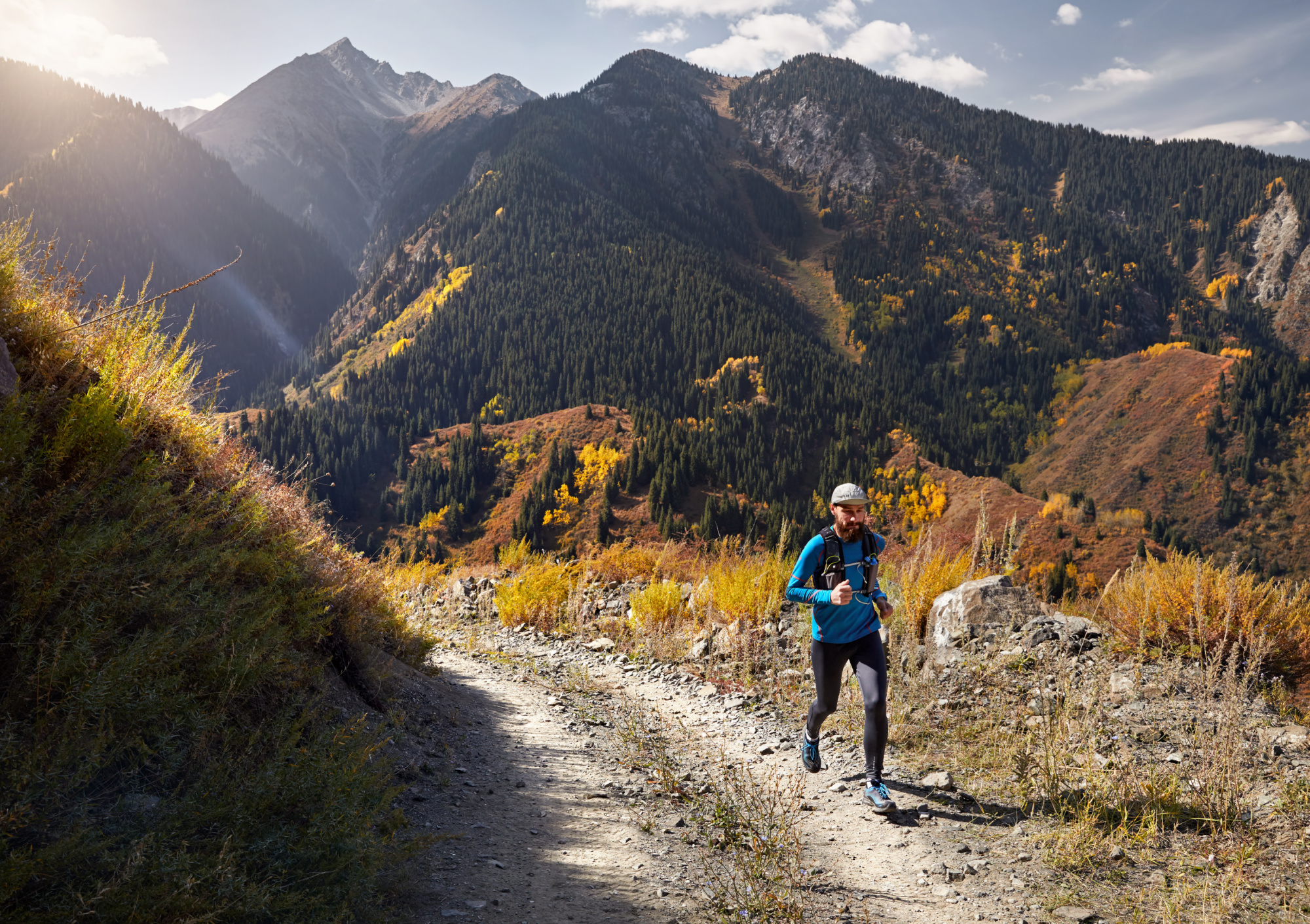Utah resident Kyle Burgess spends a lot of his time outdoors, but you won’t see any pictures of him hunting or fishing on his social media pages. An ambassador for several outdoor fitness brands, Burgess is a hardcore trail runner. Which is why he was so confused on July 6, when he was stopped by a game warden while running on state land north of Salt Lake City. The officer informed Burgess that since he didn’t have a valid hunting or fishing license, he was breaking the law by trail running there.
“I just got stopped by wildlife management,” Burgess says in a video he shared to Instagram that day. He’d been running along the Bonneville Shoreline Trail, which is part of the Timpanagos Wildlife Management Area. “Guess I gotta buy a fishing permit to run the trails. Oh boy.”
The new state law, which took effect May 7, requires anyone over the age of 18 to have a valid hunting or fishing license to access the Wildlife Management Areas in Utah’s four most populated counties: Davis, Salt Lake, Utah, and Weber. The four counties are located along the Wasatch Front, where roughly 80 percent of the state’s population lives.
The hundreds of comments and replies on Burgess’ video range from applause to disdain. (Burgess’ Instagram handle, @cougargkyle, comes from a viral video he recorded in 2021, when he was confronted by a mountain lion while running on public land in Utah County.) The comments also speak to a larger debate around the conservation of public spaces and natural resources, and who foots the bill for these things.
Some commenters have said that all outdoor users — and not just the hunters and anglers who buy licenses — should support conservation with their own dollars. Critics of the law say they refuse to buy a license for something they don’t do (or, in some cases, even support). The state’s Division of Wildlife Resources, meanwhile, isn’t forcing anyone to buy hunting and fishing licenses. But the agency says that if someone isn’t willing to pay for wildlife management areas, then they shouldn’t be able to access those places, either.
“A lot of people are just looking at this as them having to pay more money to access public property. When in all reality, these are very different public lands,” Utah DWR spokesperson Faith Heaton Jolley tells Outdoor Life. “These lands are specifically for wildlife and hunting and fishing, and they are specifically purchased with hunting and fishing dollars.”
Why the New Utah Law Is Needed
Utah Rep. Casey Snider, who sponsored the bill that is now law, echoes Jolley. He says the crux of the issue isn’t losing access to public lands, as many users who don’t hunt and fish have claimed. It’s recognizing what certain lands are designated for.
“We’ve had a hard time differentiating WMAs and multiple-use public land,” Snider tells OL by phone, while commuting on a train from Baltimore to Washington D.C. “People can enjoy [WMAs], but their highest use is for wildlife. This law is meant to clarify that.”
Snider points out that as Utah’s population has grown, so has the popularity of non-consumptive sports like mountain biking and trail running. But these outdoor users, he says, haven’t been contributing to the management of WMAs the same way that licensed hunters and anglers have.
As just one example of why the new law was necessary, Snider points to mountain bikers who’ve built unauthorized trails on WMAs in Utah County. (There is also research showing the impacts that law-abiding mountain bikers have on wildlife.) Snider says he’s seen similar conflicts on WMAs in other areas, and that the law could be expanded to other counties in the future.
“The narrative of ‘we’re restricting access,’ is false,” Snider says. “I disagree with that. Everyone should pay to help those places be the best that they can be. Hunters and fishermen should not bear the brunt of the cost for maintaining these places. This is not a restriction issue. This is a fairness issue.”
Why Not Create a New License?
Utah is an outlier with its new law because of how the requirement is tied to hunting and fishing licenses. Some Western states, like Montana, require non-consumptive WMA users to buy special licenses, while most others don’t require WMA users to have a specific permit unless they are hunting and fishing. Utah chose not to create a new license for hikers, bikers, bird watchers, and others for a specific reason.
Read Next: Most Americans Want More Public Land, Not Less, Poll Shows
Because while federal funds are not attached to general recreation permits, hunting license fees are matched with federal dollars though the Pittman-Robert Act, and fishing license fees are matched in the same way through the Dingell-Johnson Act. Combined, these two avenues provide millions in funding for fish and wildlife conservation. That large pot of money is then appropriated to individual states based on a few factors, including the overall number of license holders.
In other words, sell more licenses and receive more federal funding. The real beneficiaries, however, are the state’s wildlife resources.
“It’s not about the money, and it’s not about the numbers to me,” says Snider. “It’s about fairness, and the prioritization of wildlife on WMAs.”
Read the full article here





